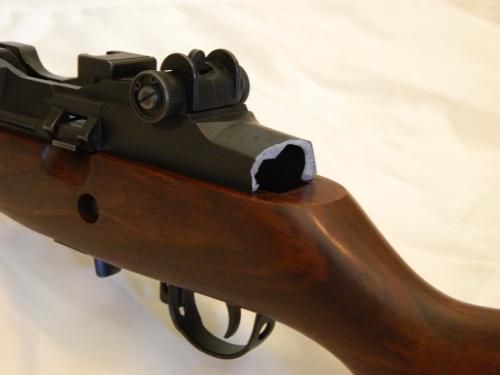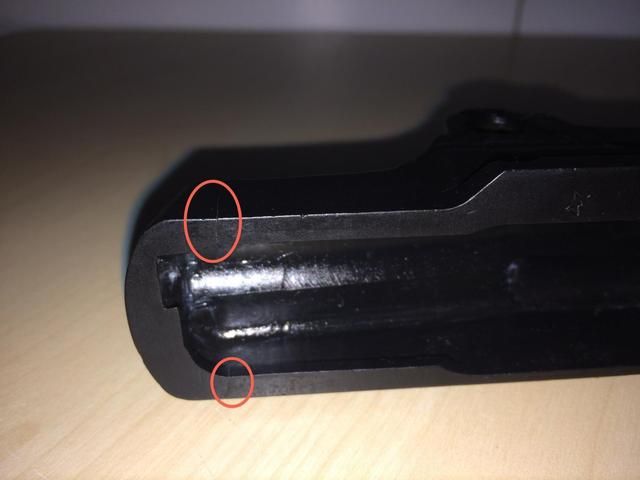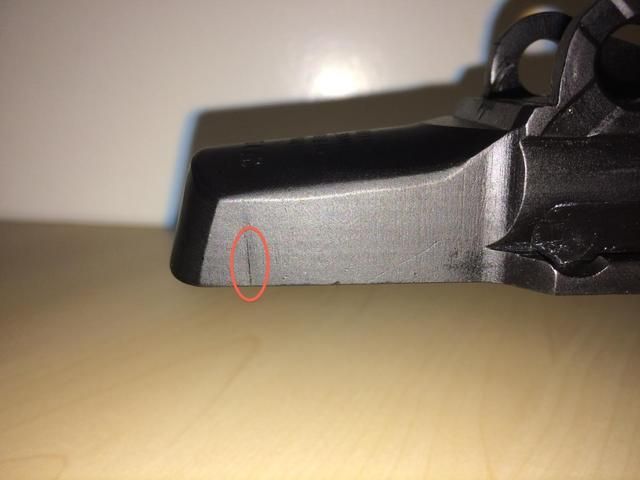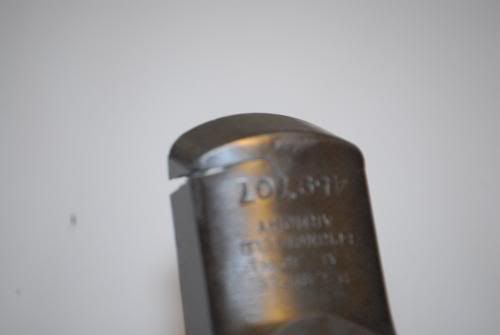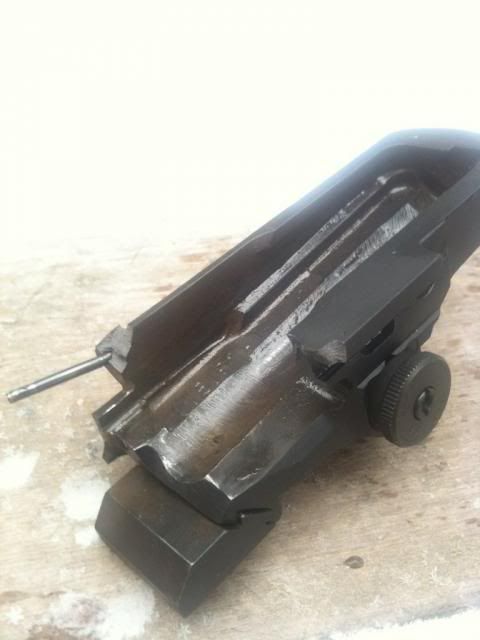Hopefully I can get photos uploaded soon.
Last weekend I was shooting my Garand for the first time in about 3 years. The gun had perhaps 200-300 rounds through it since I got it through the CMP 18 years ago. Almost all these were reloads, a standard mid-range IMR-4895 47gr with a 150gr bullet.
I took out 3 clips. The first fired a nice 100yd group. I loaded the second, and in retrospect I noted that I had to work harder than normal to get the round to chamber. The clip had some corrosion on it but the lip of it put a bit of a groove in the top round as I repeatedly dropped the bolt to get it to chamber. Not unheard of in the rifle, but perhaps excessive.
The first 4-5 rounds fired fine, and my spotter put them right into the nice tight group from the first clip. Then I pulled the trigger again, and the gun came apart in my face. I was on the bench, so I was lucky that the worst damage was a small pinpoint bleed on my left arm with powder burns and the hair singed off.
The stock disintegrated. Most of the mag parts were ruined and the rounds bent/destroyed. I have not found the meta bottom plate to the action.
I wish I'd photographed the action before I beat it open but I did not. From memory the bolt appeared normal -- CLOSED -- although the ejector on top was visibly protruded. Once I got the case out, it was clear that it had detonated and fire formed approximately 1/8" outside full chambering. So the shoulder was blown forward and there was a false case head in front of the real one, which ruptured out the bottom.
Of course my first thought was "I screwed up reloading" but after seeing the case I do not believe this is the case. I was paranoid reloading for the Garand, so I measured shoulder position on each case individually, double-weighed the charge manually, and checked the final seating length of each cartridge. Cases were only once-fired, by me. Even after a gun rupture with the case locked in the chamber, the op rod is in fine condition and my understanding is most over-pressure rounds resulting in gun rupture will include a broken/bent op rod.
The bottom portion of the bolt face was broken off. The easiest explanation is out-of-batter discharge, but the design of the gun should have prevented that and the after-inspection showed that lugs were engaged and the case did remain locked in the chamber.
At this point my best guess is that perhaps the gun suffered wear-related damage on the previous shot and the bolt fractured. The next round chambered was not fully chambered due to the bolt damage, despite locked lugs, and pulling the trigger resulted in case rupture discharging the energy through the magazine.
I'm interesting in opinions on cause of failure by those familiar with function. I'm not interested in critique of my reloading technique by those lacking any real information as to what was done. 20+ years reloading with zero issues and this being the ammo I was most anal with, each round each step double checked, I'm not buying it.
I'm also interested in information as to the salvageability of the receiver. While the bolt, stock, trigger group, and most internals are toast, I see no damage to the receiver. But I'm not an expert with the design so I remain concerned as to where some wear could have caused things to become out of tolerance enough to lead to this issue.
Last weekend I was shooting my Garand for the first time in about 3 years. The gun had perhaps 200-300 rounds through it since I got it through the CMP 18 years ago. Almost all these were reloads, a standard mid-range IMR-4895 47gr with a 150gr bullet.
I took out 3 clips. The first fired a nice 100yd group. I loaded the second, and in retrospect I noted that I had to work harder than normal to get the round to chamber. The clip had some corrosion on it but the lip of it put a bit of a groove in the top round as I repeatedly dropped the bolt to get it to chamber. Not unheard of in the rifle, but perhaps excessive.
The first 4-5 rounds fired fine, and my spotter put them right into the nice tight group from the first clip. Then I pulled the trigger again, and the gun came apart in my face. I was on the bench, so I was lucky that the worst damage was a small pinpoint bleed on my left arm with powder burns and the hair singed off.
The stock disintegrated. Most of the mag parts were ruined and the rounds bent/destroyed. I have not found the meta bottom plate to the action.
I wish I'd photographed the action before I beat it open but I did not. From memory the bolt appeared normal -- CLOSED -- although the ejector on top was visibly protruded. Once I got the case out, it was clear that it had detonated and fire formed approximately 1/8" outside full chambering. So the shoulder was blown forward and there was a false case head in front of the real one, which ruptured out the bottom.
Of course my first thought was "I screwed up reloading" but after seeing the case I do not believe this is the case. I was paranoid reloading for the Garand, so I measured shoulder position on each case individually, double-weighed the charge manually, and checked the final seating length of each cartridge. Cases were only once-fired, by me. Even after a gun rupture with the case locked in the chamber, the op rod is in fine condition and my understanding is most over-pressure rounds resulting in gun rupture will include a broken/bent op rod.
The bottom portion of the bolt face was broken off. The easiest explanation is out-of-batter discharge, but the design of the gun should have prevented that and the after-inspection showed that lugs were engaged and the case did remain locked in the chamber.
At this point my best guess is that perhaps the gun suffered wear-related damage on the previous shot and the bolt fractured. The next round chambered was not fully chambered due to the bolt damage, despite locked lugs, and pulling the trigger resulted in case rupture discharging the energy through the magazine.
I'm interesting in opinions on cause of failure by those familiar with function. I'm not interested in critique of my reloading technique by those lacking any real information as to what was done. 20+ years reloading with zero issues and this being the ammo I was most anal with, each round each step double checked, I'm not buying it.
I'm also interested in information as to the salvageability of the receiver. While the bolt, stock, trigger group, and most internals are toast, I see no damage to the receiver. But I'm not an expert with the design so I remain concerned as to where some wear could have caused things to become out of tolerance enough to lead to this issue.

